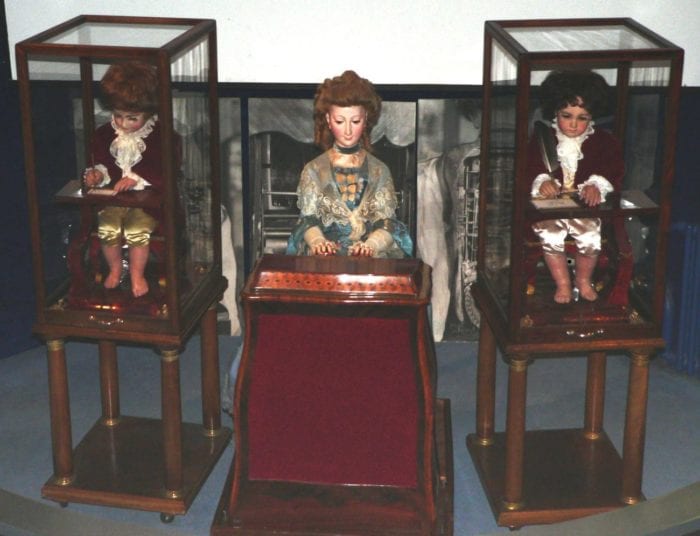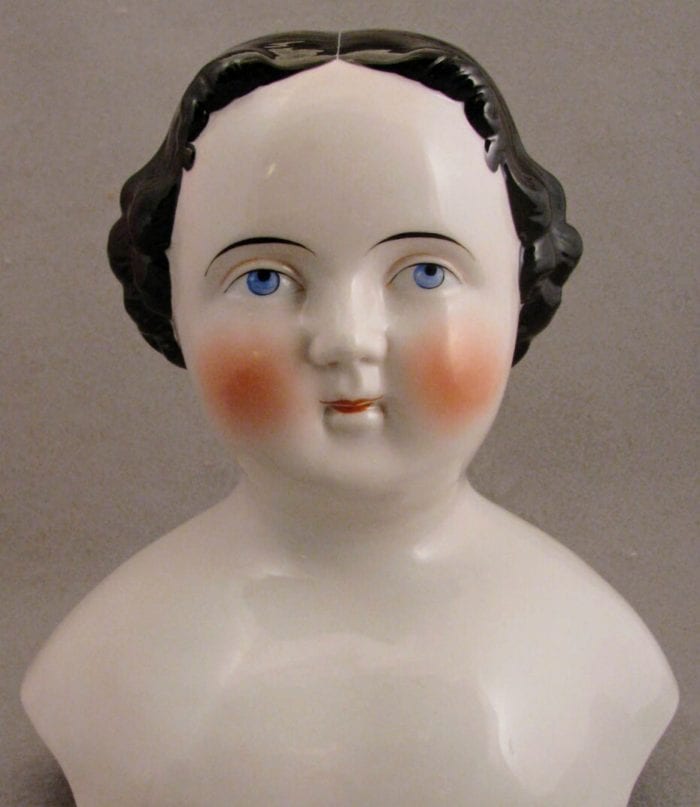Most people find dolls creepy. They often are featured in horror films such as the Annabelle trilogy, Talking Tina from The Twilight Zone, or Chucky from Child’s Play. While these fictional dolls that move and speak have been around on film for quite a while, the real-life versions of these dolls have been around much longer. As creepy as it may sound, there are dolls in the real world that move and speak without the aid of CGI or convincing voice actors.
You may have seen the manufactured descendants of these special types of dolls at Home Depot or Spirit Halloween during the spooky season. Many of them can move on their own with the help of a battery and some gears inside the doll’s body. These are most commonly known as animatronic dolls which simply means that they are dolls “animated by means of electromechanical devices” according to Webster’s dictionary. As creepy as these modern dolls are, their ancestors did not require batteries and operated seemingly by their own free will. What we’ll be discussing used technology far older than electromechanics.
The modern animatronic came from what was known as automatons as early as the 1700s. The video below shows early examples and is a good introduction to the topic.
What is an automaton?
Animatronics and automatons are not exactly the same thing, although they are very similar. Both of these are objects, normally shaped to represent a living being like an animal or human, that can move on their own. However, the technology used to get them to move is the key difference.
An animatronic uses electromechanics to get a doll or T-Rex to move. An automaton, however, does not use electromechanics because they predate animatronics by several hundred years. Don’t let their old age fool you as their means of locomotion are quite impressive. Automatons use various ways to move, but the most common are gears like you would find in an analog clock.
Through the centuries, many kinds of automatons shocked the common public. Some people even believed that the inventor of one had created life by making an automaton duck that could poop. It wasn’t real poop, of course, but Jacques de Vaucanson convinced a French audience in 1739 that it was.
While a defecating duck might not be particularly unnerving, many automatons made later in the 18th, 19th, and early 20th centuries were seemingly created to evoke a sense of fear in our modern sensibilities. One such creation was commissioned by Swiss artist, Pierre Jaquet-Droz, who created an iconic set of three pieces in the late 1760s and early 1770s: a musician, a writer, and a draughtsman. Each automaton doll performed its eponymous tasks; the draughtsman drew four different images, the writer wrote several brief messages, and the musician played the organ.

By today’s standards, these automatons were both impressive and unsettling as they performed tasks reserved for human beings, not dolls. Automaton dolls are of particular interest because of how frightening they appear in the modern context of horror films featuring sentient dolls that desire to kill us. The previously mentioned automatons did not speak despite their prolific abilities, but in the years to come there would be many that could speak and do much more.
What kinds of automaton dolls are there?
Automaton dolls come in many forms to the delight of rich Victorian doll collectors and to the horror of modern audiences. Those playing musical instruments seemed common enough. A doll that could stand on its own and play a melody or two was considered a fine gift when it was first conceived. However, there were many other types of automaton dolls that came later.

Here are a few of the most common automaton dolls of that time and more modern ones:
- Autoperipatetikos dolls: Despite their complex name, these were the automaton dolls that simply walked. Though the way they walked gave them an unsettling zombified appearance.
- Cymbalier dolls: This automaton performed one simple task and that was to make cymbals clash. Although this was not incredibly impressive compared to the other ones on this shortlist, they do have a strange visage to them.
- Gigoteur dolls: The uniqueness of this particular automaton does not rest in its technical abilities but in the sheer terror of its appearance. Whoever painted the dolls needed to work on their facial proportions.
- Musical Marottes: A doll’s spinning head on a stick is unnerving enough, but add in some toybox music and it reaches a new level of eeriness. These automatons were simple in design, but nonetheless an odd aesthetic choice even for the kind of doll it was.
- Ondine swimming dolls: You heard that correctly, there were automaton dolls whose arms and legs were fixed with mechanisms that made them capable of swimming. If that seems implausible, there were many that were successful at a feat of which most dolls were not capable. Fortunately, they did not last long in the water.
- Phonograph dolls: These automaton dolls are perhaps best remembered by Talking Tina from The Twilight Zone because they spoke. They were made a bit after the Victorian dolls but are disturbing, regardless.
Automaton dolls were an impressive feat of mechanical engineering and many of the animatronic dolls seen in the stores around Halloween today owe their success to their automaton doll predecessors. However, as incredible as these dolls were, they are still downright uncanny at the end of the day. As charming as people may have thought they were at the time, they would be considered a horror film waiting to happen today. Creepy dolls are not at all a new concept and these dolls demonstrate the many ways the human mind can make such a simple object so horrifying.
Looking for more on creepy dolls? We’ve got you covered:
“The Best Creepy Dolls in Horror”


